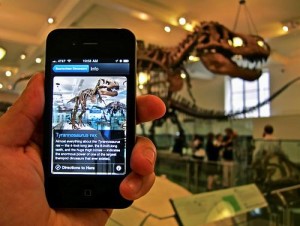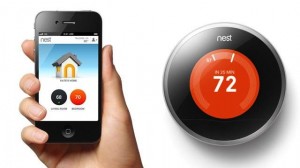January 21, 2014 – Guest blogger Jessica Oaks has written this post about the evolution of Bluetooth technology. This is her first contribution to 21st Century Tech blog and I hope not her last. She is a native of Southern California. A journalism graduate of Cal State Long Beach, a freelancer who writes about technology, finance, fashion, travel and more, she loves describing how technology is making life easier for people. Jessica is also associate editor at www.freshlytechy.com, a blog that puts a sassy twist on technology. You can follow her on Twitter @TechyJessy. So please read, enjoy and comment on Jessica’s contribution to 21st Century Tech Blog.
———-
Unless you’ve been living under a rock the last decade or have stubbornly held on to that flip phone of yours, the chances are good that you’ve heard the term “Bluetooth” bandied about – by friends, sales people, and the media at large. However, if you’re like many, you don’t know exactly what it means, only that it works. That won’t be the case for long. Put simply, Bluetooth technology is set to reshape our lives in untold ways.
The Robots are Talking to Each Other – But Fear Not
Bluetooth refers to wireless communication between two devices via short-wavelength microwave transmissions. It is commonly used to connect cellphones with digital auxiliaries such as speakers or headsets. What’s unique about Bluetooth is its use for local, short-range personal area networks, also known as PANs. PANs personalize the digital experience through proximity based applications. And it is this aspect of Bluetooth that is making the technology a driving force now and in the future. With smartphones becoming more pervasive by the day we are all walking around with Bluetooth receivers in our pockets. Bluetooth technology is becoming cheaper and cheaper. The result – people’s digital experiences are becoming more personal.
How?
Personalized Advertising
Have you seen the science-fiction film Minority Report? If so, you may recall the future it predicted; one in which stores advertised to individuals as individuals and not just random customers. When Tom Cruise’s character walks into a GAP halfway through the film, monitors in the store address him by his first name and ask him how his experience has been with the clothes he last purchased (actually, they’re addressing the person whom he received his new eyes from, but that’s a different story!). Bluetooth technology enables this type of marketing experience today. It isn’t science fiction.
With Bluetooth integrated into retail companies communicate with customers through their smartphones. With a smartphone GAP app the store detects when a customer enters. offers the customer discount coupons, initiates a conversation, or produces a pop-up advertisement for products similar to those the customer previously purchased the last time he or she visited. This is personalized advertising delivered by Bluetooth enabled technology.
Geo-based Customer Experiences
Picture this. You are in a museum that is outfitted with Bluetooth receivers and transmitters. Your smartphone suddenly becomes a docent, providing you with directions to the most popular attractions and information on basics such as restaurant hours, gift shop specials and bathroom locations.
The Bluetooth technology makes this experience dynamic and ever-changing – as opposed to a traditional app, which in many ways provides a static experience. Think about the possibilities: as you move through the museum, going from room to room with the Bluetooth receivers tracking your movement and alerting you to what tantalizing exhibit is in the next room.
The All-Digital Home
What if you never had to turn a light on or off in your home? What if when you got home, your favorite artist started playing on your home speakers, automatically? And what if your home were always the exact right temperature? This may sound like science-fiction, but Bluetooth technology makes it science-fact. Or at least makes the possibility of this happening science fact. The applications are nearly limitless.
Perhaps more than any other environment, your home is set to be revolutionized through Bluetooth technology. That’s because it can sense your presence and adjust the home environment to meet the daily needs of your life. Rather than you working to keep your home, your home would work to keep you. Some predict that within the next two decades your smartphone will be used more for communicating with your home than with your friends.











